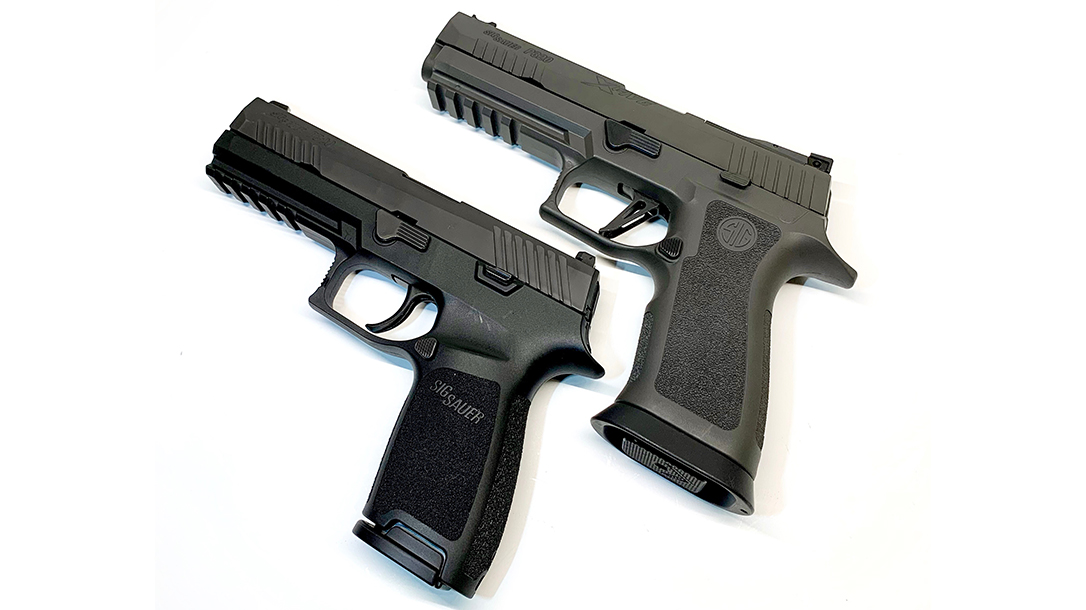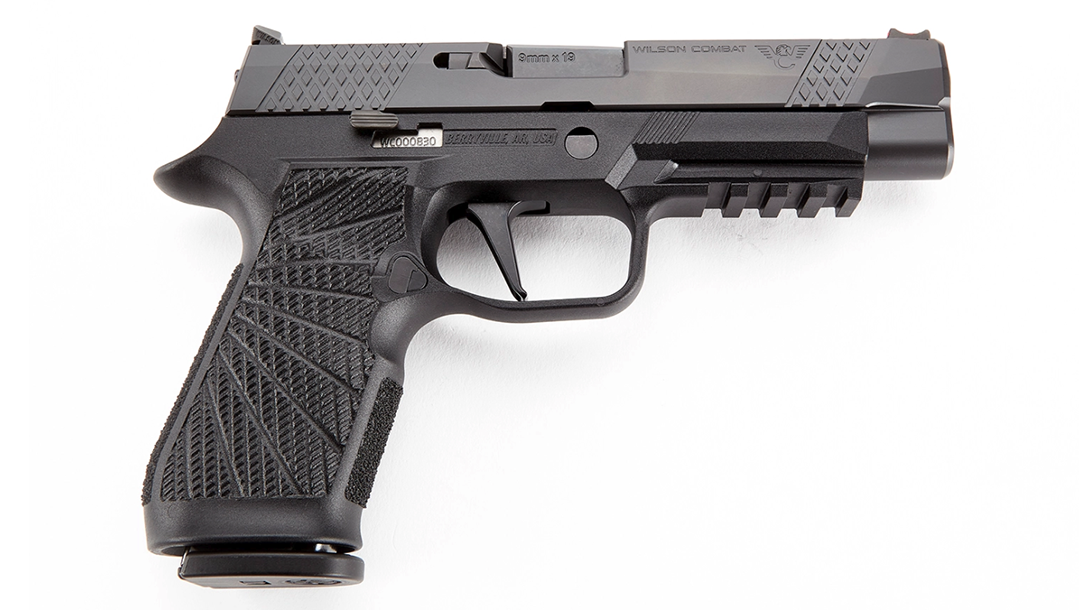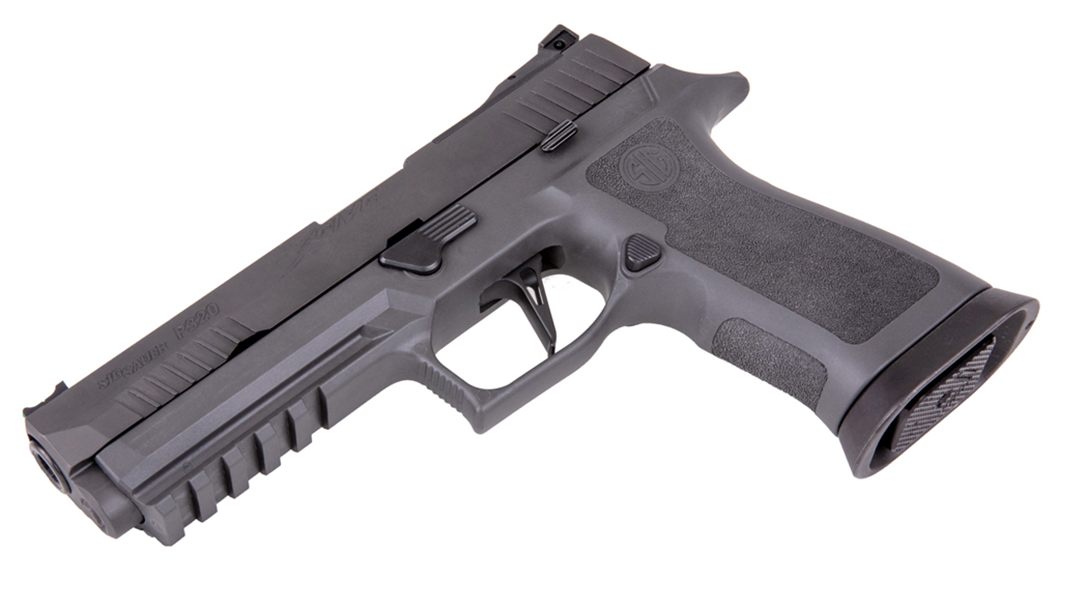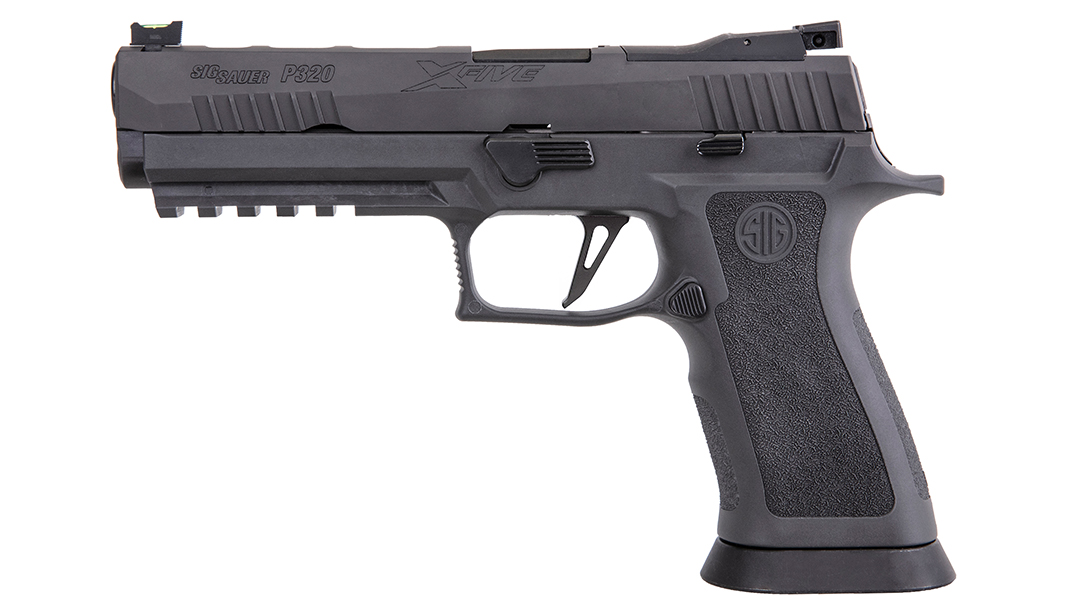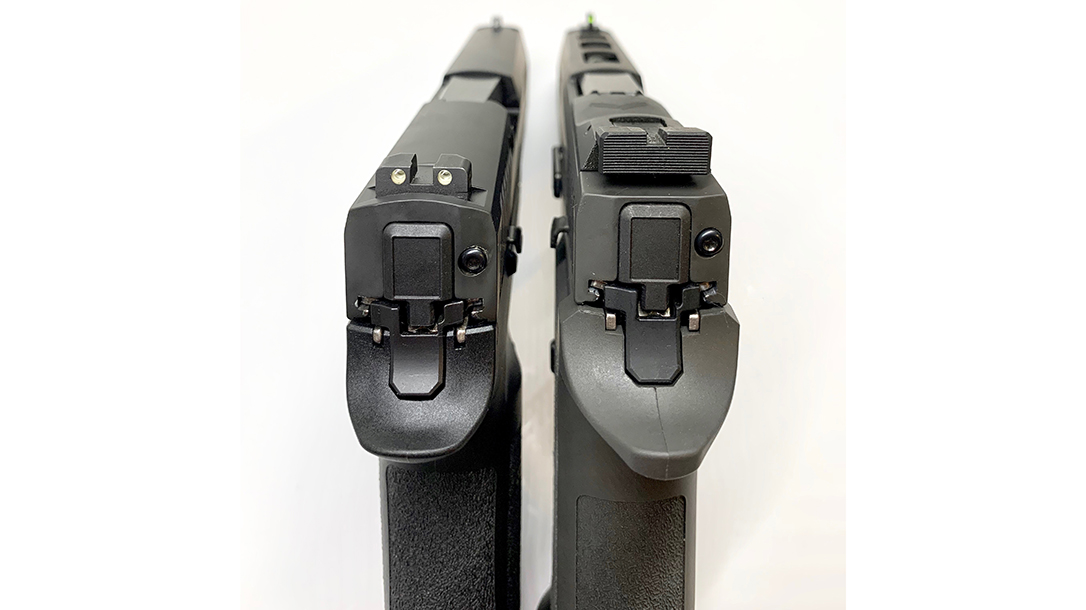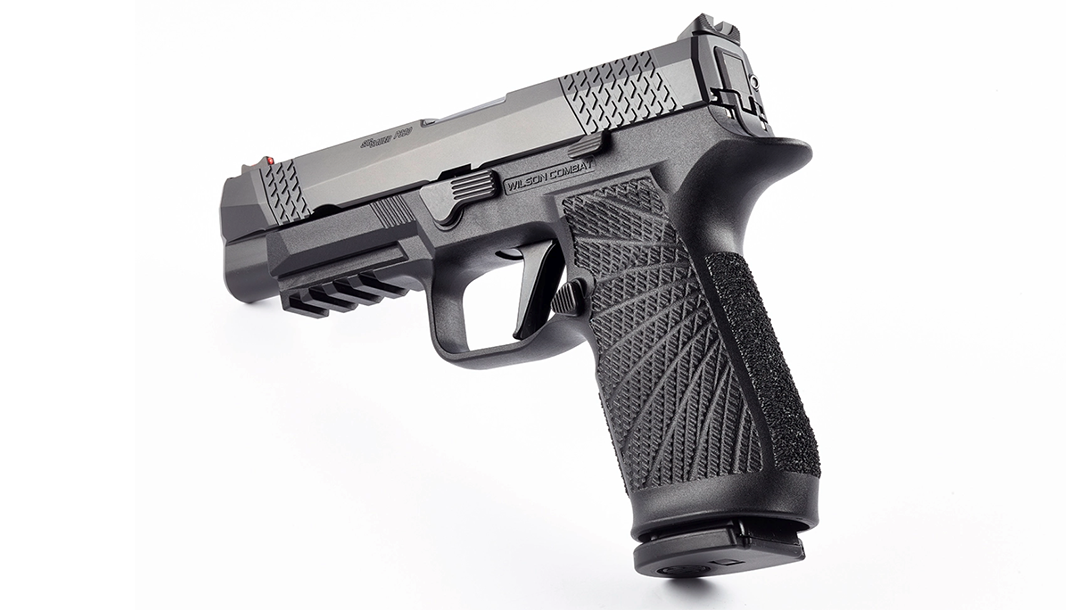I purchased my first SIG Sauer P320 back in 2017. Compared to other striker-fired 9mms at the time, I liked how the Nitron Full-Size model handled. The grip fit my hands perfectly, the trigger was consistent, there weren’t any extraneous safeties, and the sights helped me get on target quickly. Over the years, I’ve been happy with the purchase, too. I use it to teach others to shoot and have acquired a number of holsters for it. Over at least 3,000 rounds, it’s probably failed three times—and that was when the gun was absolutely filthy and running shoddy ammo.
Wilson Combat WCP320 Vs SIG P320 XFive Legion
More recently, I got my hands on SIG’s P320 XFive Legion, which I immediately fell in love with. In fact, the sample I first tested is now part of my collection. (You can read all about it in the upcoming July/August issue of Combat Handguns.) To me, all of the upgrades over the standard model are absolutely worth it, but I still have the Nitron Full-Size for personal and home defense. The Legion is great for burning plates at the range.
Advertisement — Continue Reading Below
Well, Wilson Combat noticed all the attention the P320 platform is getting these days, and its expert gunsmiths decided they could do better. The result: The custom-grade WCP320. Let’s take a closer look at the new pistol, then compare it to my other SIGs.
Wilson’s Way
Right off the bat, the WCP320 is essentially a fully upgraded P320. Wilson even uses new, unfinished slides from SIG to complete the pistol. The frames are also made in-house, like many of the other components.
The redesigned slide features Wilson’s trademark X-TAC front and rear cocking serrations, and the area near the muzzle has been beveled for easy reholstering. You’ll also find the Wilson Combat name and logo on the right side, and the top of the slide has more of the X-TAC pattern to reduce glare—a nice touch. The barrel and slide also wear a black DLC finish for corrosion resistance. Then, for quick targeting, Wilson includes a fiber-optic front sight and one of its renowned Battlesights at the rear. The Battlesight has a deep U-notch that provides plenty of light around the front sight when you’re aiming.
Advertisement — Continue Reading Below
The brand-new, Carry-sized, polymer frame is rather narrow with thumb contours as well as Wilson’s highly effective Starburst texturing on the sides. The front- and backstraps have also been reshaped and textured for better ergonomics and traction. Wilson has also rounded the triggerguard, and the magazine well has a hefty bevel for quick reloads.
The reversible magazine release, ambidextrous slide stop and flat-faced trigger are all supplied by SIG, but Wilson can tune the action for you as an option. The WCP320 also comes with two 17-round X-Series magazines.
Comparing Guns
So how does the WCP320 compare to the Nitron Full-Size and XFive Legion? Well, first off, the Legion is still a cut above the other two. It’s meant for competition and is rather large for concealed carry; that’s why its slide is pre-milled for an optic like the SIG ROMEO1PRO. It also has a special tungsten-infused grip that is heavier to reduce recoil and provide for faster follow-up shots. So, the WCP320 is more in line with the standard P320.
Advertisement — Continue Reading Below
In terms of sights, the P320 Nitron Full-Size comes with three-dot SIGLITE night sights. In the dark, the dots glow to help you aim better. But the dots on the rear sight can be a little distracting, too. The Legion and WCP320 both use bright fiber-optic front sights—a positive for many shooters—and all-black rear sights. The Legion’s are fully adjustable with a square notch, while the WCP320’s U-notch rear sight can be drifted in its dovetail for windage. They’re only different because they’re intended for different missions.
The Wilson slide is a big improvement over the standard P320’s. The DLC finish provides more durability, and the X-TAC pattern is quite stylish and functional. You hand definitely won’t slip on this slide. That said, I’ve never had a problem with the Nitron Full-Size’s serrations, and the Legion’s are just a tad wider and shallower. The Legion also feature three sporty lightening cuts on top and wears a PVD coating for durability. I’m not going to get into a PVD-versus-DLC debate here, but they’re both effective. The Nitron finish has withstood plenty of hard use, too.
By the Numbers
The Legion also sports a 5-inch, match-grade bull barrel that’s a step above the 4.7-inch Nitron and Wilson barrels, but it’s worth noting that the latter also has a DLC finish.
Advertisement — Continue Reading Below
Now for the frames. The Nitron Full-Size has what we’ll call the baseline polymer grip module. The texturing is adequate, the triggerguard is squared, and a small beavertail prevents slide bite. The Legion, on the other hand, has a beefy tungsten-infused TXG grip frame that is significantly heavier and comes with a removable magazine well. The X-Series grip styling also does away with the standard model’s thumb cutouts in favor of more texturing, and a molded-in shelf prevents you from accidentally hitting the higher-profile slide stop. The beavertail is also noticeably larger.
The WCP320’s grip module is much narrower than even the standard P320’s, and its texturing ensures the gun will never slip in your hand. Seriously. Wilson sent me one of its WC320 grip modules, which I found perfectly executed. I really like the thumb shelves molded into it as well as the Starburst texturing. The beveled magazine well is also a nice touch, but it prevents you from using standard 17-round magazines. You have to use X-Series mags (two are included) or extended 21-rounders. The Legion comes with three 17-round magazines with special aluminum baseplates.
Finally, the Legion and WCP320 have similar flat-faced triggers while the Nitron Full-Size uses a curved trigger. I haven’t tested the WCP320’s, but I know just how awesome the Legion trigger is—light and crisp with a super-short reset. The standard trigger is heavier, which I prefer for defensive handguns anyway.
Advertisement — Continue Reading Below
The Verdict
No, I haven’t had a chance to test the complete WCP320. But looking at the features, and having tested its proprietary grip module, I can safely say that it’s a cut above any standard P320. In my eyes, the Legion still reigns supreme, but that’s because of its race-gun enhancements. For everyday carry, you really can’t do much better than the WCP320. On top of that, Wilson Combat offers a number of customization options, including different frame colors and sizes, sights, action work and more. The WCP320 might be the most expensive option at a base price of $1,195 (compared to the Legion at $900 and Nitron at $500), but you’re getting Wilson Combat quality in a tough, do-anything pistol.
Obviously, the choice is yours, but check out all three guns if you can. The P320 platform is extremely versatile and easy to change up thanks to its modularity. But no matter which configuration you try, I know you’ll have a helluva time at the range. For more information, please visit WilsonCombat.com and SIGSauer.com.
